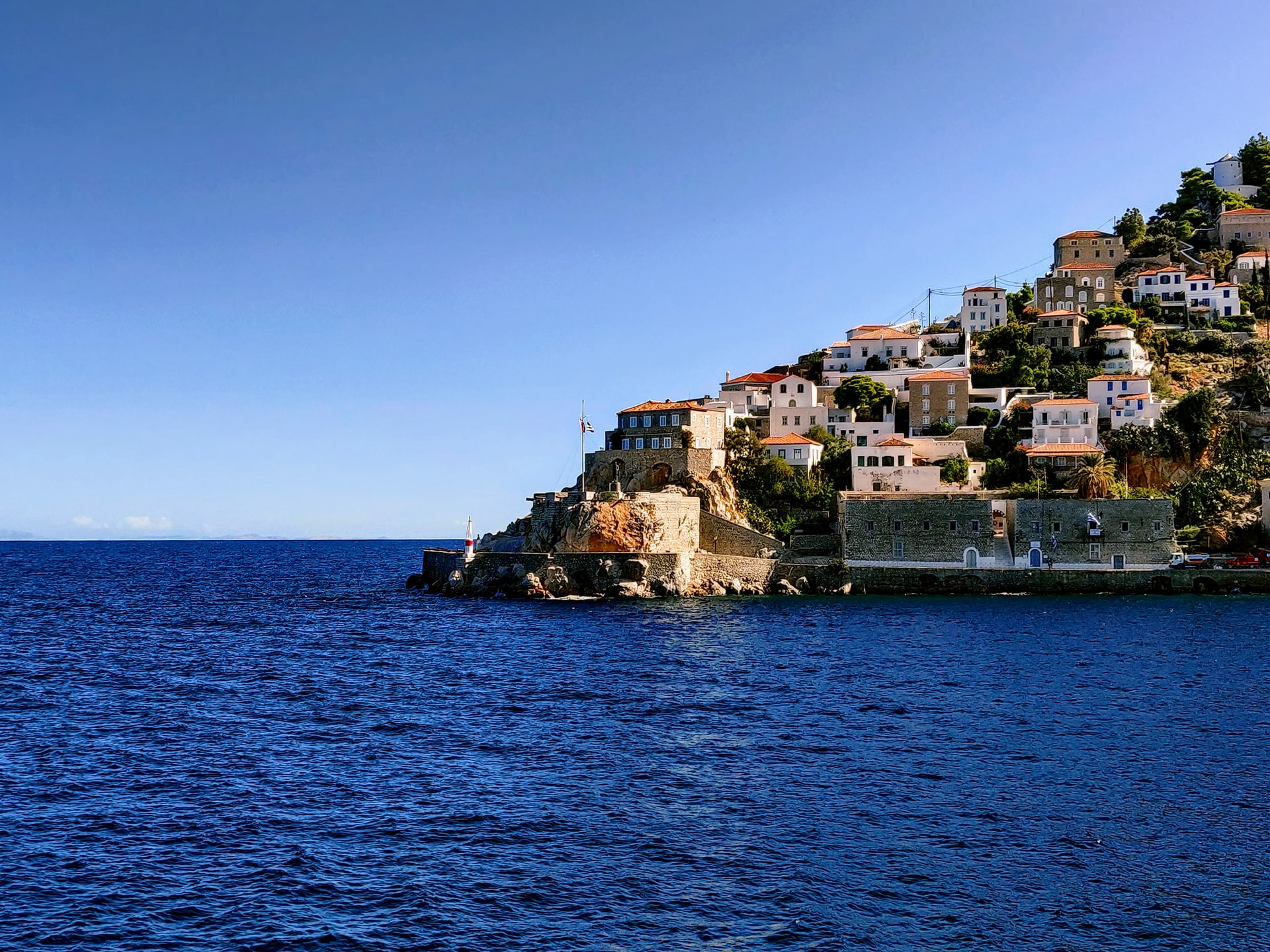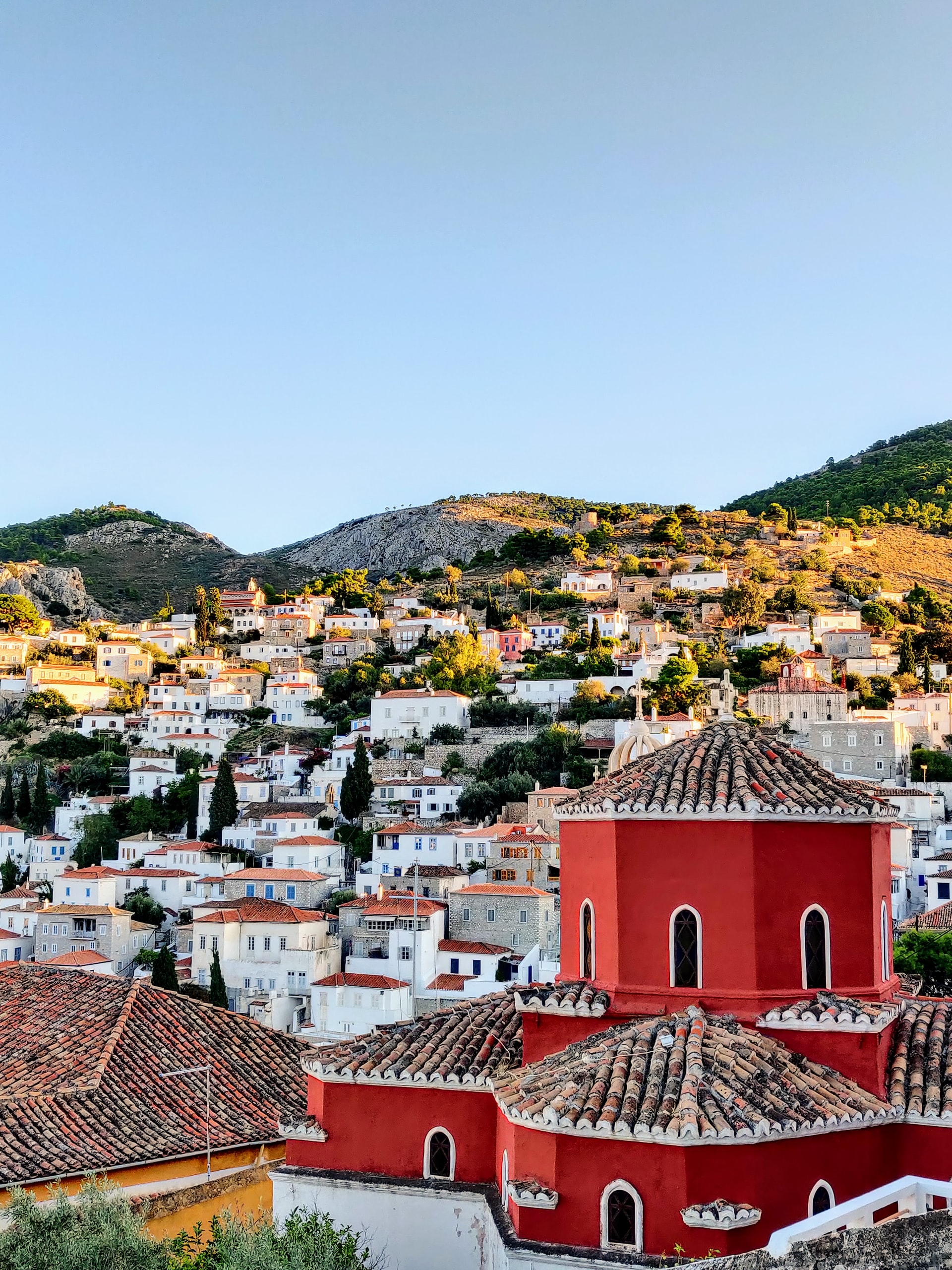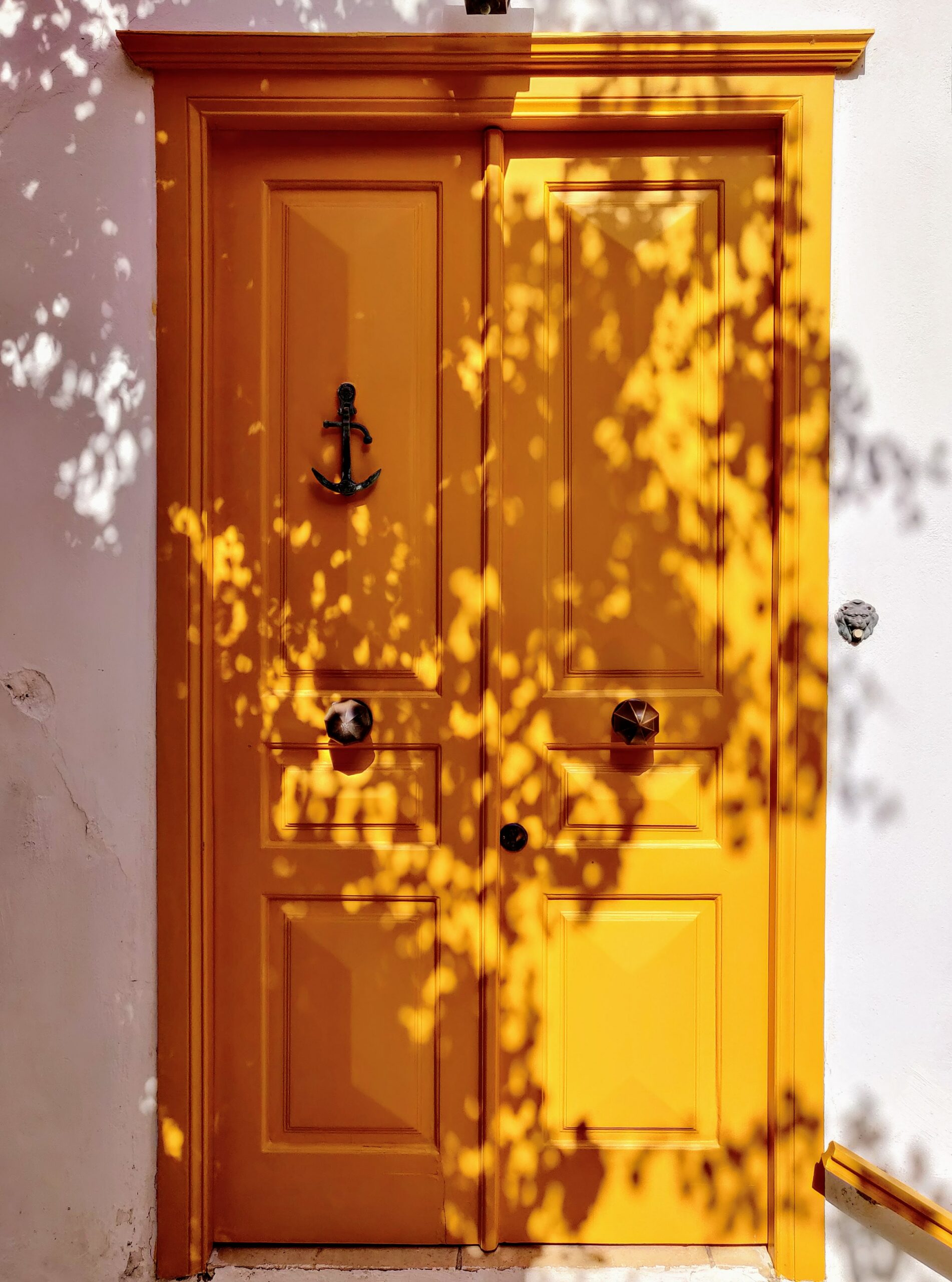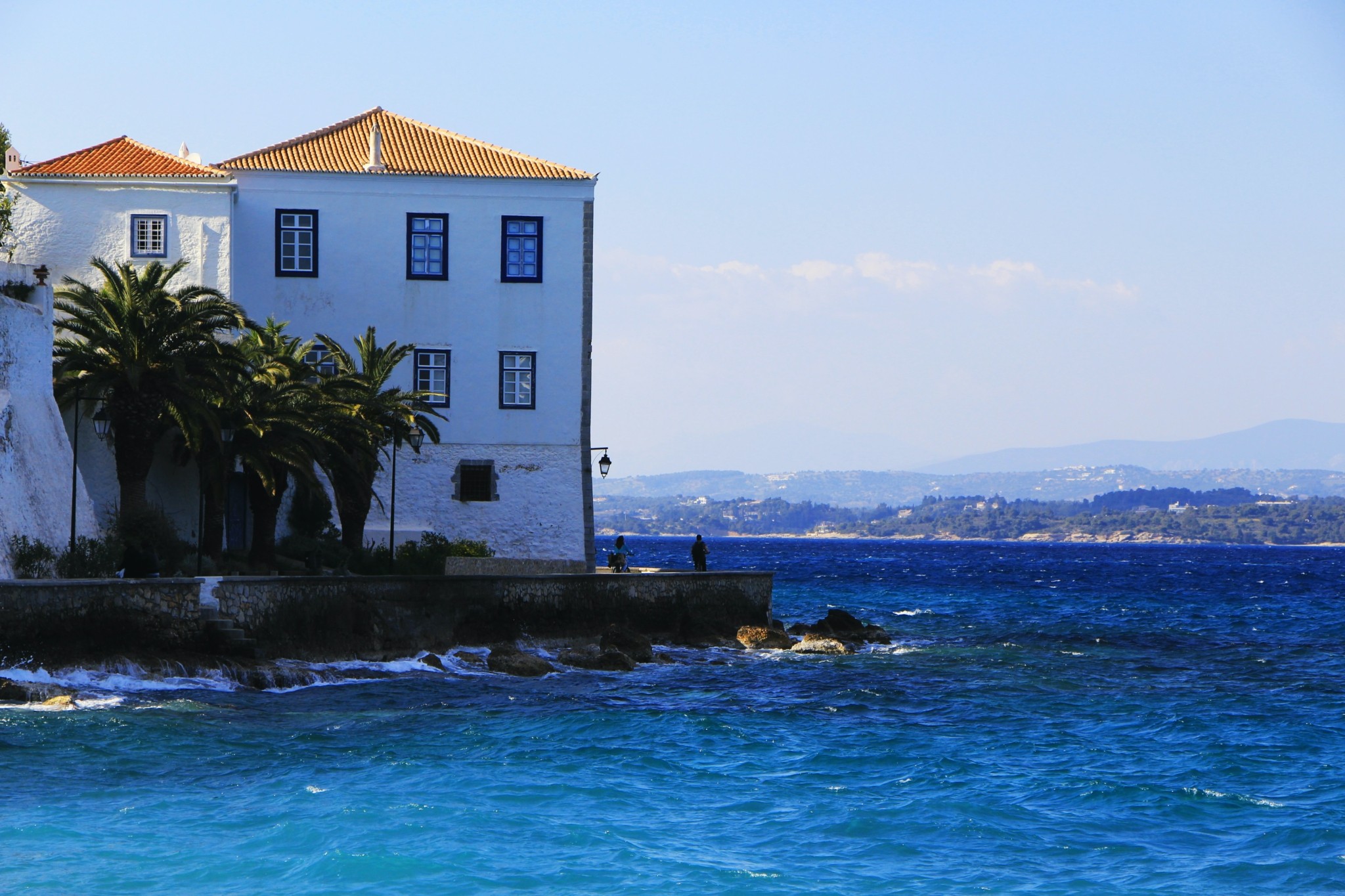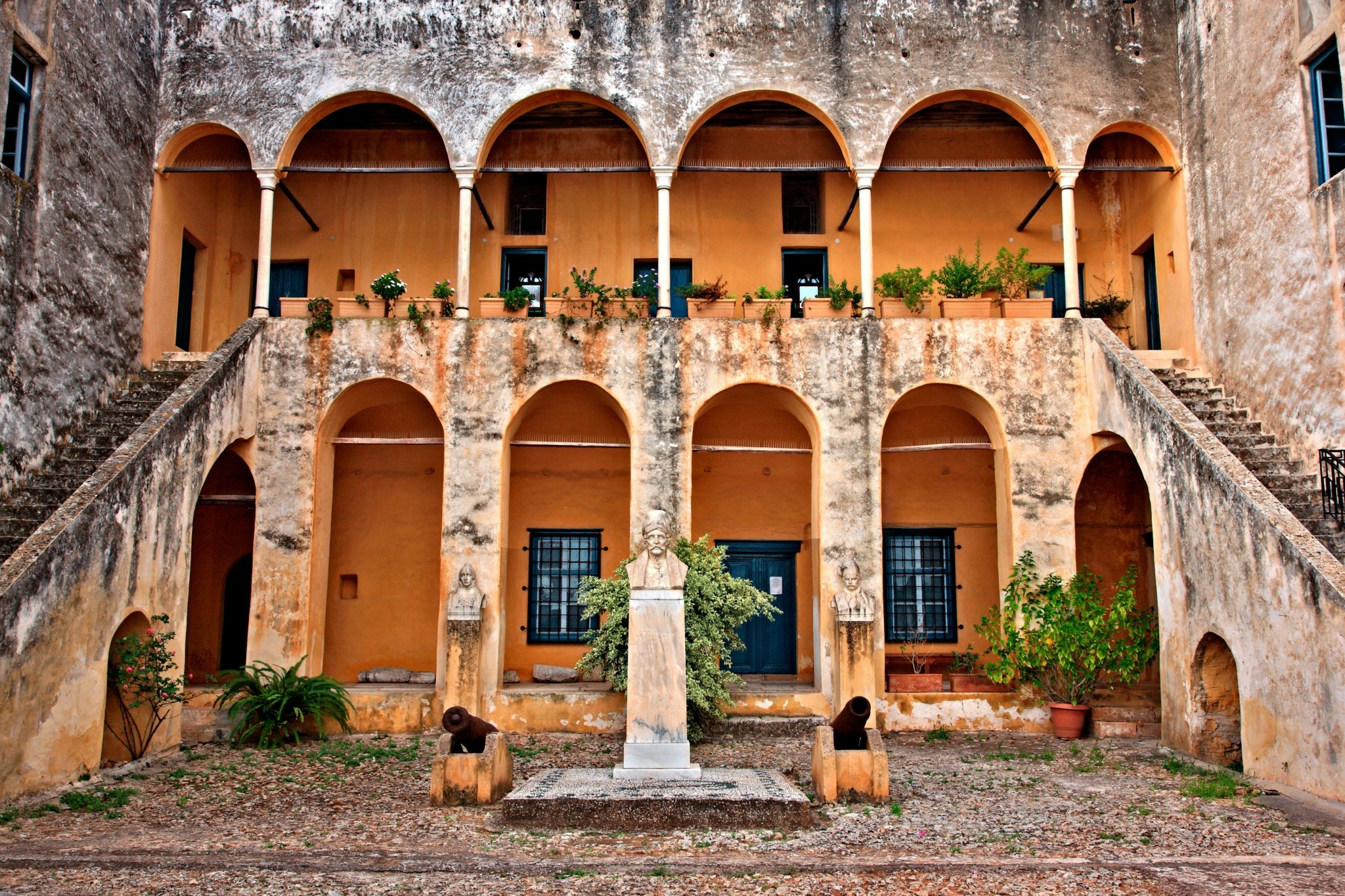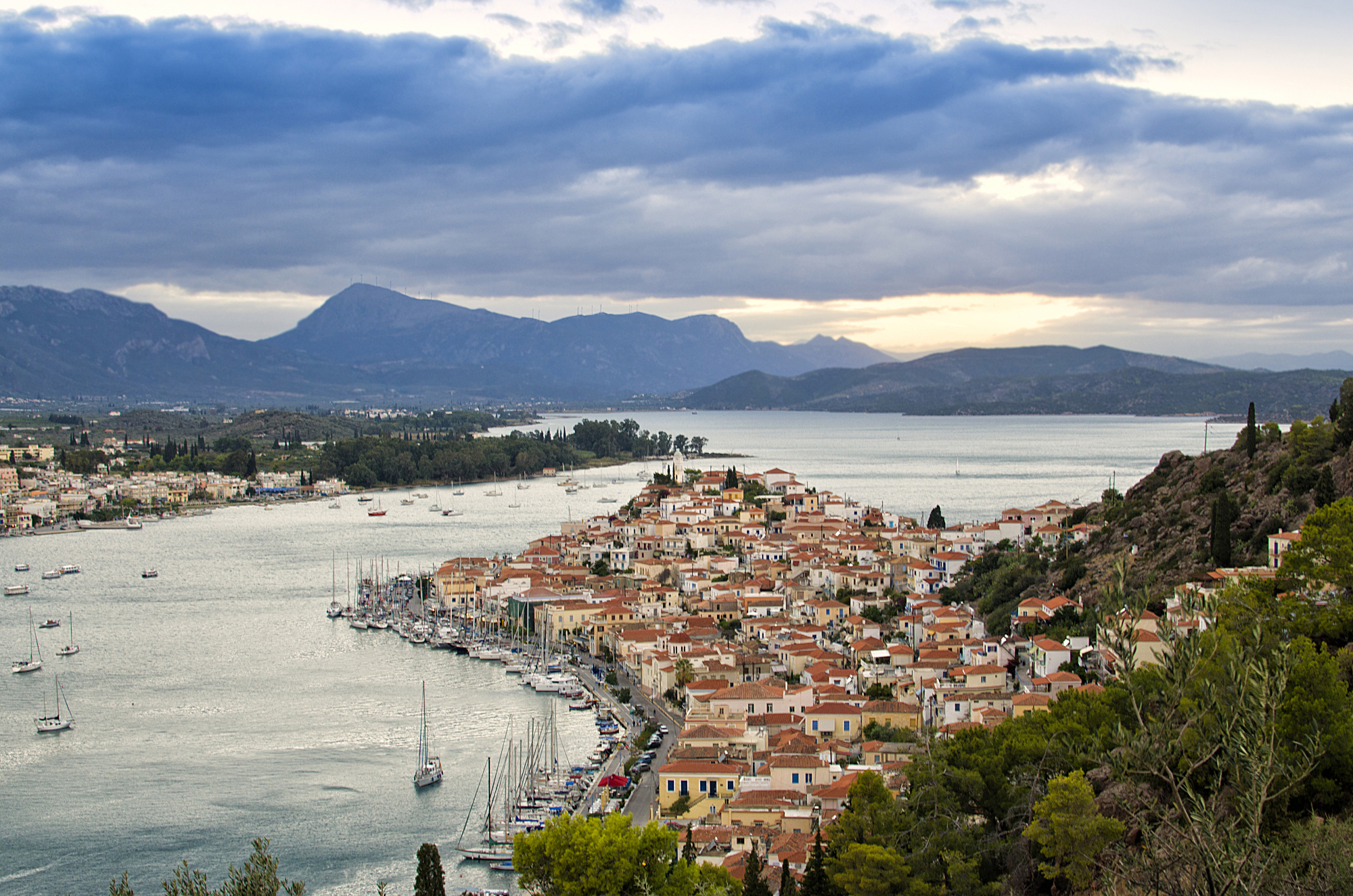Hydra, Spetses and Poros, three marvellous islands close to the capital, all ideal for a relaxing time, trekking, even some winter swimming for visitors still keen on taking a dip at this time of the year, add to the options offered by the wider Athens area, a safe, appealing and multifaceted destination promising unforgettable experiences throughout the year.
Hydra
One of the most impressive and picturesque islands of the Argosaronic Gulf, Hydra’s beauty can be mainly attributed to the island’s special architecture. Hydra is an ideal island for a weekend getaway, just a two-hour ferryboat ride from the port of Piraeus. The island is car-free and offers museums, trekking routes, marvellous guest houses, and restaurants for all tastes.
The island features a considerable number of superb, well-preserved houses, among them mansions linked to prominent figures of modern Greek history, including former prime ministers. Approximately 30 mansions and 300 kapetanospita (large, prime-location properties linked to high-ranking maritime officers), have been preserved on Hydra, the majority of these dating back to the 18th and 19th centuries. Take a relaxed stroll through the cobbled paths of Hydra to view the impressive architecture. The island’s mansions, combining island and mainland elements, typically feature simple yet imposing exterior style. The interiors of these properties, during their heyday, were adorned with luxury items from Europe and the East.
Visitors strolling around the town of Hydra can make interesting stops to visit museums showcasing the island’s history, from the Neolithic Period to the modern era. The Greek War of Independence, declared in 1821, is a central part of the history of this island, which played a key role in the struggle.
Begin your walk from the port, at the bastions and canons, and make a first stop at the Hydra Museum-Historical Archives (open daily, 09:00-16:00, www.iamy.gr), which includes exhibitions covering the Balkan Wars, World War II, as well as work by significant artists and heirlooms from the period of the Greek War of Independence. The building also hosts a library with old and rare publications as well as the Historical Archive, featuring manuscripts and documents from the 18th and 19th centuries as well as various other archives. At the other end of the port, on a pine tree-covered hill, the former residence of Pavlos Kountouriotis, a rear admiral and President of Greece in the early 20th century, hosts the Museum of Post-Byzantine Art and History of Hydra, whose exhibits include Kountouriotis family heirlooms as well as items associated with the island’s modern history (Fri-Mon, 08:30-15:30, http://odysseus.culture.gr/).
Apart from strolls in and around the town, Hydra is also an ideal place for trekking. Overall, the island’s trails cover a total distance of approximately 80 km. A route beginning from Hora, the main town, and running eastwards reaches the Lighthouse of Zouvra, on the northeast coast. The route passes by the monastery of the same name and runs through rugged territory dominated by stone. Heading in the opposite direction, from Hora in a southwesterly direction, a trail runs by many pine trees to reach Bisti, on the western edge, and its Agios Georgios chapel. A shorter route runs from Hora towards Mandraki, slightly to the east, the Stavros chapel, and, from there, back to the main town. In addition, a route from Hora heads up to the Profitis Ilias chapel and further up to Eros, the island’s highest peak, for a panoramic view.
Spetses
Spetses, another charming island close to Athens that is ideal for a weekend excursion, offers a bonus feature as the greatest part of the distance to the island can be covered by vehicle – to the Corinth Canal, the village Loutra Elenis, Epidaurus and then to the nearby small port Kosta. A short crossing by ferryboat or private boat taxi from Kosta reaches Spetses within minutes. The tiny port Dapia, the heart of the main town, Spetses, features lovely neoclassical mansions, pebble-paved alleys leading to picturesque spots, as well as the port’s old battery and canons.
Visit the Spetses Museum (open Wed-Mon, 08:30-15:30, http://odysseus.culture.gr), hosted at the mansion of Hatzigiannis Mexis, a prominent island figure who contributed to the 1821 Greek War of Independence by offering four of his vessels for the battle against the ruling Ottomans. His mansion was built in the late 18th century as a Pi-shaped building. It was listed in 1924. The property was donated to the Greek State by Mexis’ heirs in 1938 and, from 1939, hosted the Archaeological, Historical and Folklore Collection. The building nowadays hosts exhibits detailing the island’s history, from the Early Helladic period to the modern era. Items on show include ceramic pieces and vases, tombstones, sculptures and coins from the Roman and Byzantine times, a painting collection, local costumes, everyday objects from the island’s past, as well as important heirlooms from the 1821 Greek Revolution, including Spetses’ Revolution flag, the ossuary of naval commander Laskarina Bouboulina, a heroine of the struggle, as well as weapons used by her and other fighters. It is also worth seeing the exterior of the Anargyreos & Korgialeneios School of Spetses, an imposing and lovely building that is not open to the public, as well as the mansion of island entrepreneur and benefactor Sotirios Anargyros, a superb neoclassical building with a garden and pebbled paths.
Spetses offers many walking routes, one of the aspects making the island a great place to visit any time of the year. Walk from the new port towards the old port with the small shipyards, where boats were cleaned and repaired. Enjoy this route’s neighbourhoods and well-kept houses and make it all the way to the lighthouse, the country’s oldest, along with the lighthouse at Kea (Tzia). Visitors may also head up to the town’s old neighbourhood Kastelli, offering an incredible view from the Taxiarhon church location. The vista from this point reaches all the way to Hydra on a clear day. Then head down to the clock square for a relaxed coffee.
If wishing to go beyond the town, a number of trails cover the island, some of these crossing its lovely pine forest. Spetses’ mountain features many trails and roads leading to beaches in the north and south, while the peripheral road, running by these beaches, essentially connects with virtually all the trails, creating a network that enables its users to walk to any part of the island. One impressive route begins from Agios Eleftherios, heads uphill to the Panagia Gorgoepikoou monastery, passes by Kylimeno Lithari, Horafaki and reaches Panagia Elona at the top of the hill. A shorter route, also very lovely, begins from Agios Fanourios and reaches Synantisi Kynigon. It passes by the estate of the prominent Embirikos family – Leonidas Embirikos was a major ship-owner and politician, and his son, Andreas Embirikos, a Greek surrealist poet and one of Greece’s early psychoanalysts – Piyi Vrestiza, Panagia Kapsodematousa, featuring an old threshing floor to the side, and ends at a small house at the Synantisi Kynigon location, at the ridge of the mountain. This point offers an exceptional panoramic view of the island.
Poros
Poros is comprised of two islands, Sphaeria, the capital and port, and Kalaureia. They are linked by a bridge over a narrow strait. The island-pair, situated very close to the coast of the Peloponnese, is easy to reach by taking the road to the Corinth Canal, Epidaurus and Galatas, from where a boat offers regular crossings to Poros. Visitors can also travel to the island by ferryboat, direct from Piraeus port. The main town of Poros looks out towards Troizinia, in the Peloponnese’s northeast, is built amphitheatrically, and features lovely neoclassical houses offering enjoyable viewing while taking a seaside stroll. The clock tower, built in 1927 on a small lush hill, is an island landmark with a view reaching Galatas. The clock tower’s construction was funded by Ioannis Papadopoulos, a Troizinia-based politician hailing from Poros. He had bought the clock’s mechanism, a state-of-the-art system for its time, from the US.
The island’s Archaeological Museum (open Wed-Mon, 08:30-15:30, http://odysseus.culture.gr), is situated at Koryzi Square. On display at this museum are artefacts ranging from the Mycenaean to Roman periods. They hail from a variety of regional locations, including the Temple of Poseidon, which stood in the island’s north, ancient Troizina, Ermioni, and Agios Konstantinos in Methana. The museum was built in the 1960s at the location of the old residence of Alexandros Koryzis, a former Greek Prime Minister. From the Archaeological Museum, head towards the centre of the town, to the Agios Georgios church, adorned with murals by renowned Greek artist Konstantinos Parthenis.
A short drive or walk, some 4 km from the port, leads to the old Russian naval base, which was developed in 1834 to supply the Russian fleet in the Aegean. The beach at this area is one of the closest to the town.
The ruins of the Temple of Poseidon, built circa 520 BC, are located at the Palatia location. This temple was of Doric style with 6 x 12 columns. It is one of three major temples that were dedicated to the god of the sea around the Saronic Gulf. Ancient Greek statesman and orator Demosthenes found refuge at this temple when the Macedonians occupied Athens and pursued him as he had participated in an attempted uprising against them. Demosthenes committed suicide and was buried at the temple in 322 BC. The 18th century Zoodohou Piyis monastery is situated at lush setting with a fabulous view on the eastern side of the island, at a slope above Monastiri beach and below the temple. This monastery features a superb wood-carved altarpiece crafted in Cappadocia in the 17th century.
If you enjoy trekking, Poros offers lovely routes, most of which run through the island’s dense pine forest. A seaside trail begins from a point shortly beyond the old Russian naval base band reaches the Dana stone lighthouse. Another enchanting trail begins from the outskirts of Askeli, at Kiani Akti beach, and heads uphill to the Temple of Poseidon, passing through pine-covered slopes. Another route, circular in shape, starts from a point close to Kiani Akti beach, heads up the Stravorahi slope and then runs down to the Zoodohou Piyis monastery, from where the trail returns to the beach. This route also covers lush greenery.



